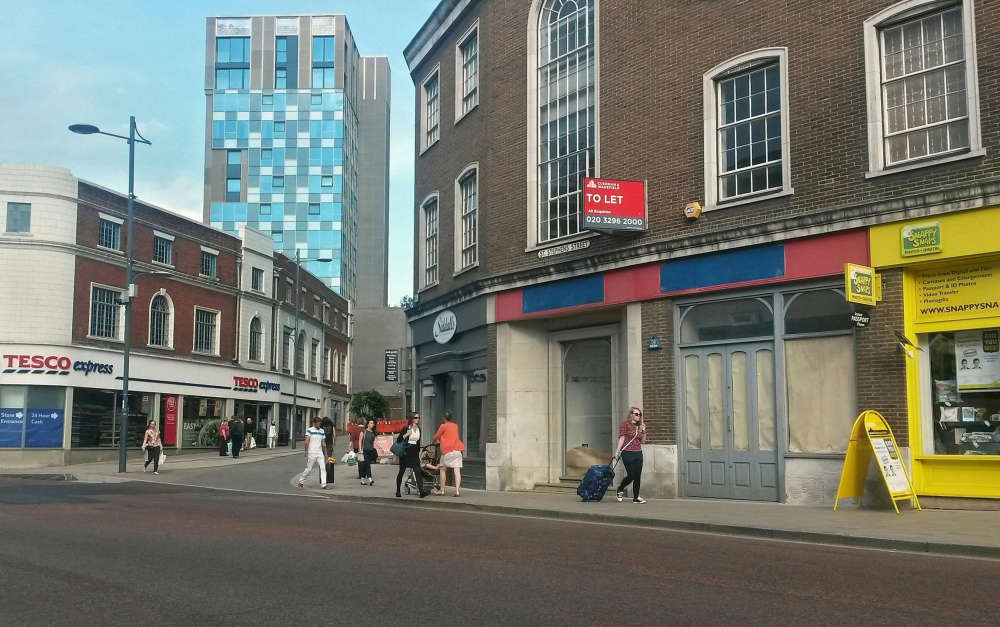Why Semi-Commercial Property Investment Is Gaining Popularity
Applications for semi-commercial property investments have nearly doubled in 2024 compared to 2023.
Specifically:
● 24% of semi-commercial applications in 2024 were for new purchases, up from just 13% in 2023
● The South East region has been particularly attractive, with 39% of applications in 2024 targeting this area, compared to 27% in 2023
These properties, which combine both residential and commercial elements, offer a unique opportunity to diversify a portfolio and tap into multiple revenue streams. The increasing demand for flexible property solutions has made semi-commercial investments an attractive option, particularly in the face of fluctuating housing and retail markets. This guide explores why semi-commercial property is becoming a preferred choice for many investors and how you can benefit from this growing trend.
Investors are drawn to semi-commercial properties for a variety of reasons, including better returns, more flexibility, and a wider range of mortgage options. With the right approach, this type of investment can provide a balance between the stability of residential property and the higher potential returns of commercial property.
What Is a Semi-Commercial Property?
A semi-commercial property is a building that includes both residential and commercial spaces. Common examples include flats located above shops, restaurants with living spaces for staff, or offices with residential flats within the same building. This dual-purpose nature allows owners to earn income from two sources: rent from residential tenants and revenue from commercial leases.
The flexibility of semi-commercial properties makes them attractive to investors looking to balance risk. For example, if the commercial tenant leaves or the retail market slows, the residential side can continue to generate income. This flexibility can help ensure more consistent cash flow, even during periods of economic uncertainty.
According to Savills, opportunistic investors are likely to focus on sectors of the retail market due to adjusted rents and rates, coupled with increased yields and potential for medium-term capital growth through changes in property use. At the same time, demand for top-tier, high-quality warehouses, particularly in London, is expected to push prices higher in 2024.
Additionally, semi-commercial properties often qualify for different types of financing, such as a semi-commercial mortgage, which offers terms suited to properties with both residential and commercial aspects. These types of mortgages may also provide more favourable rates than purely commercial mortgages.
The Appeal of Higher Yields
One of the key reasons investors are turning to semi-commercial properties is the potential for higher yields. Generally, commercial properties can offer better returns than residential properties, particularly in high-demand areas. By combining both types, investors can optimise their income potential.
For example, a property that includes a shop on the ground floor and a flat on the upper levels could yield higher returns than if it were only used as a residential building. Commercial tenants often sign longer leases, providing more income stability, while the residential units can offer regular rental income. This combination allows investors to diversify their revenue streams, potentially maximising the property’s overall profitability.
As of May 2024, the average prime yield for UK commercial property was 6.05%.
Prime yields vary significantly across different commercial property types:
● London West End offices had the lowest prime yield at 4%
● Shopping centres had the highest prime yield at 8%
To complement the potential for higher yields, semi-commercial properties also offer investors a greater degree of flexibility in adapting to market shifts. For instance, as consumer habits change, parts of a property can be re-purposed or re-let, allowing investors to pivot between commercial and residential use as needed
More Favourable Tax Benefits
Semi-commercial property owners can also benefit from more favourable tax treatment compared to pure commercial or residential investments. In the UK, mixed-use properties often qualify for reduced stamp duty rates. While residential properties are subject to higher stamp duty rates after the introduction of the additional property surcharge, semi-commercial properties are classified differently. This can lead to substantial savings, particularly on higher-value purchases.
In addition to stamp duty savings, some investors can also benefit from more favourable capital gains tax rates when selling a semi-commercial property. Depending on how the property is structured and used, owners may be able to apply tax allowances that are not available to those with purely residential or commercial properties.
In particular, semi-commercial properties enjoy more favourable tax treatment compared to purely residential investments:
● They are exempt from the 3% stamp duty surcharge that applies to residential buy-to-let properties
● Capital gains tax rates can be lower - basic rate taxpayers pay 10% CGT on commercial property gains versus 18% on residential
● Mortgage interest tax relief changes affecting residential buy-to-lets do not apply to the commercial portion of mixed-use properties
These tax benefits add to the appeal of semi-commercial investments, making them more financially viable for a broader range of investors. However, it’s important to consult a tax advisor to understand the specific tax implications based on individual circumstances.
Securing the Right Mortgage
Securing financing for a semi-commercial property can differ from the traditional mortgage process. Due to the dual-use nature of these properties, lenders often require a more specialised approach. A semi-commercial mortgage is designed for this type of property and provides the flexibility to account for both residential and commercial elements.
One of the advantages of using a semi-commercial mortgage broker is that they can help you navigate the complex landscape of semi-commercial lending. These brokers have access to a variety of lenders and can assist in finding a mortgage that fits your needs, whether you’re an experienced investor or purchasing your first semi-commercial property.
For those looking to invest in a mixed-use property, brokers like Mortgage Lane offer tailored services to help you find the right financial solution. They can advise on everything from loan-to-value ratios to interest rates, ensuring that your mortgage aligns with your investment goals.
Diversification of Income Streams
One of the primary reasons investors are drawn to semi-commercial properties is the ability to diversify income streams. With both residential and commercial tenants, you’re less reliant on a single source of income. If one side of the property becomes vacant or underperforms, the other can help offset potential losses. This makes semi-commercial properties more resilient to economic shifts or changes in the housing and retail markets.
For example, in a downturn, commercial tenants may struggle more than residential ones, or vice versa. Having both types of tenants under one roof spreads the risk and helps maintain a steady cash flow. This diversification also appeals to lenders, as properties with dual income streams are often considered lower risk compared to single-use investments.
Furthermore, commercial tenants typically sign longer leases, offering stability. Residential tenants, although usually on shorter leases, provide regular, reliable income. Together, these factors make semi-commercial properties an appealing option for investors seeking consistent revenue with less volatility compared to single-use investments.
As the property market has become less volatile in recent months, investors are taking the opportunity to expand their portfolios with higher-yielding assets like semi-commercial properties. This trend reflects a strategic adaptation to the current economic environment, particularly in response to higher interest rates.
Understanding the Risks
As with any investment, it’s important to recognise the risks associated with semi-commercial properties. While the benefits are numerous, there are also challenges that potential investors need to consider. One of the main risks is the potential for higher vacancy rates, particularly on the commercial side of the property. If you’re in an area where retail or office demand fluctuates, it might be harder to keep commercial units fully occupied, which could impact your overall income.
According to a report by Knight Frank, the UK retail vacancy rate reached 14.1% in early 2024, reflecting challenges in certain high street and commercial areas. This highlights the risk of commercial units being difficult to fill, particularly in regions where demand for retail or office space is inconsistent.
Additionally, the dual-use nature of these properties can sometimes make it harder to secure financing. Some lenders may be hesitant to approve a mortgage for a property that combines both residential and commercial spaces, particularly if the commercial element is seen as riskier. Research by the British Property Federation suggests that only 65% of lenders are willing to approve semi-commercial mortgages, with hesitation primarily stemming from the perceived higher risk associated with commercial spaces. However, by working with a knowledgeable semi-commercial mortgage broker, you can find financing solutions that suit your specific needs and reduce potential obstacles.
It’s also important to stay up to date with local planning laws and regulations, which can affect how you manage and develop your semi-commercial property. Changes in zoning laws or regulations about mixed-use buildings could impact your ability to alter or expand your property as desired, so always consult with legal and planning experts before making significant changes.
FAQs
1. What is a semi-commercial property?
A semi-commercial property is a building that includes both residential and commercial elements. Common examples include a shop with a flat above or an office building with residential units. These properties offer the opportunity to generate income from both types of tenants, providing diversified revenue streams.
2. Why are semi-commercial properties becoming popular?
Semi-commercial properties are gaining popularity due to their flexibility, potential for higher yields, and favourable tax treatment. Investors appreciate the ability to generate income from both residential and commercial tenants, reducing reliance on a single source of income. Additionally, there is growing demand for mixed-use spaces in urban areas, making these properties more valuable.
3. What are the tax advantages of semi-commercial properties?
One key tax advantage of semi-commercial properties in the UK is lower stamp duty compared to purely residential properties, especially since mixed-use properties are not subject to the additional property surcharge. Furthermore, there may be favourable capital gains tax treatments when selling such properties, making them an attractive investment option.
4. What is a semi-commercial mortgage, and how does it work?
A semi-commercial mortgage is a loan specifically designed for properties that combine residential and commercial elements. The lender assesses both the residential and commercial income potential when determining the loan amount and interest rate. A semi-commercial mortgage broker can help investors find the most suitable mortgage based on their unique property and financial situation.







